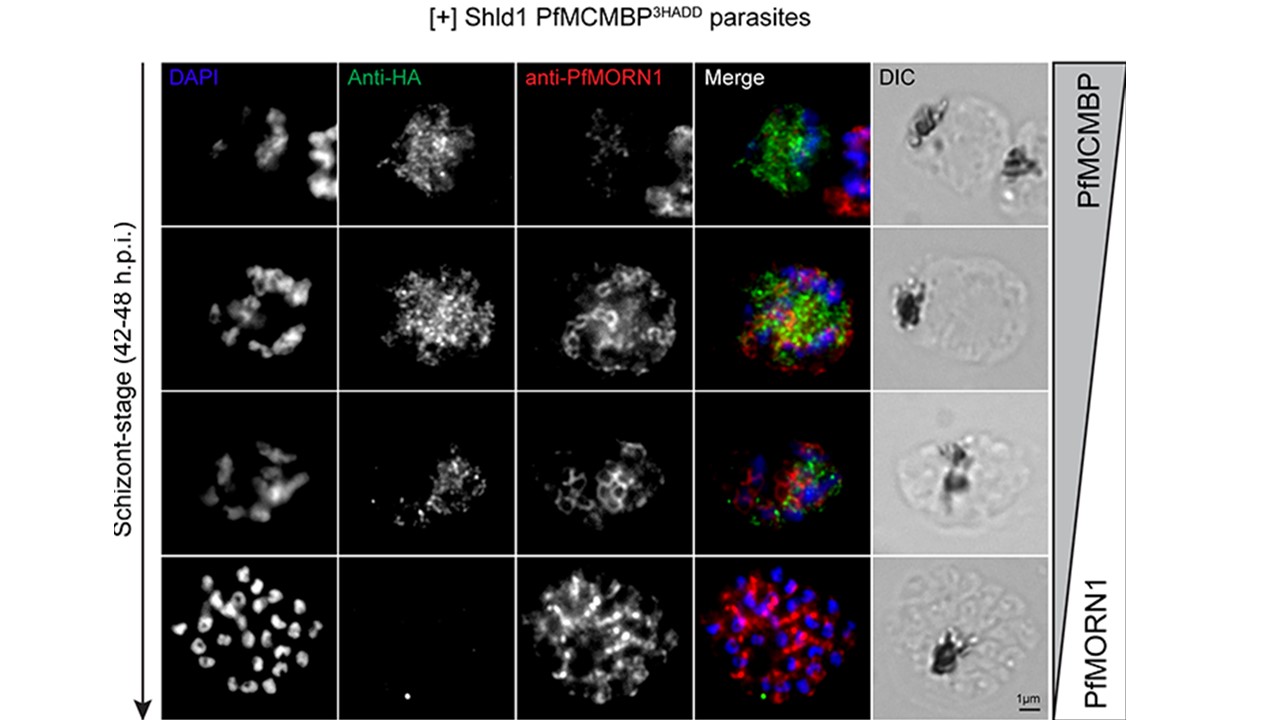Representative pictures from [+] Shld1 PfMCMBP3HADD parasites (42-48 h.p.i.) after PFA-fixation and probing with an anti-HA (green) and anti-PfMORN1 (red) antibodies. To confirm the timing of PfMCMBP signal loss, we monitored the localization of PfMCMBP and PfMORN1, a component of the basal complex, simultaneously. Prior to segmentation, when PfMORN1 is not yet visible by immunofluorescence, we observed a strong fluorescent signal for PfMCMBP in the cytoplasm as well as bright foci near the nuclei (Supplementary Figure 6). As segmentation progressed, PfMORN1 is visualized as small rings at the apical end of the parasites, which maintain high PfMCMBP expression. As segmentation progressed further, the PfMORN1 rings enlarged and PfMCMBP fluorescent signal decreased. Finally, once PfMORN1 had reached the basal end of the parasite, marking the end of segmentation, PfMCMBP was no longer detectable .
Absalon S, Dvorin JD. Depletion of the Mini-Chromosome Maintenance Complex Binding Protein allows the progression of cytokinesis despite abnormal karyokinesis during the asexual development of Plasmodium falciparum. Cell Microbiol. 2020 Oct 30:e13284.
Other associated proteins
| PFID | Formal Annotation |
|---|---|
| PF3D7_1412100 | mini-chromosome maintenance complex-binding protein, putative |
